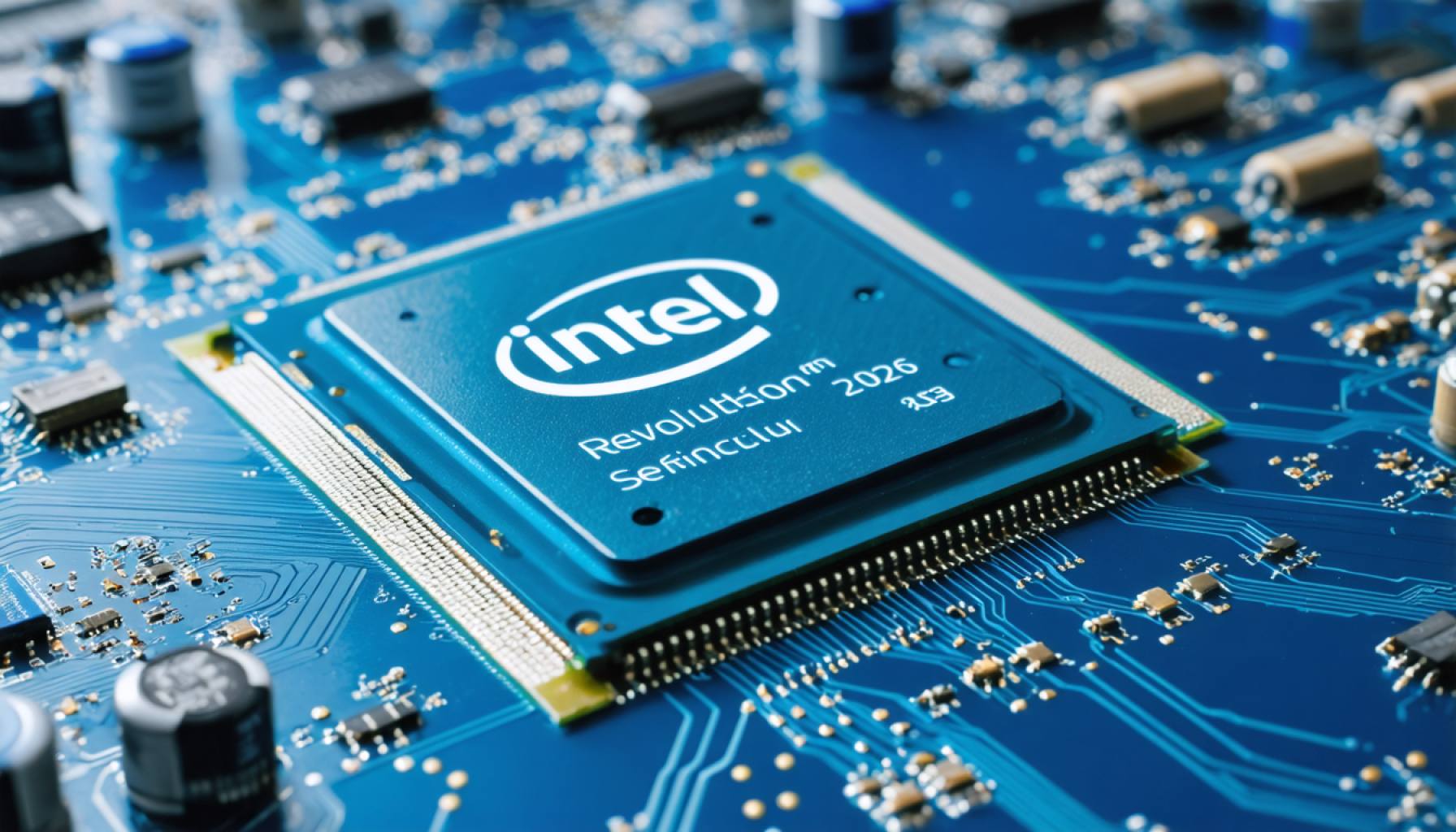- Intel aims to challenge TSMC by 2025 with its 18A node technology.
- A partnership with AWS highlights Intel’s focus on AI-driven innovations.
- Experts are skeptical of Intel’s aggressive technological roadmap.
- Intel’s revenue reached $54.25 billion, but profitability concerns persist.
- Cost-cutting measures include job cuts and halting dividend payments to address financial hurdles.
- Government support, especially via the CHIPS Act, is crucial for Intel’s plans.
- Intel targets profitability improvements by 2026, focusing on x86 processors and AI.
In the rapidly shifting semiconductor industry landscape, Intel is making daring moves to rival leading players like Taiwan Semiconductor Manufacturing Company (TSMC) by late 2025. This quest pivots on Intel’s cutting-edge 18A node technology, which gains momentum from major collaborations and government support. A key alliance with Amazon Web Services (AWS) aims to create AI-driven fabric chips, spotlighting Intel’s prowess and aligning with the tech world’s AI integration trends.
Innovations and Momentum
Intel’s strategic partnership with AWS underscores a significant leap into AI, exemplifying confidence in Intel’s advanced manufacturing capabilities. This billion-dollar venture symbolizes a bold step toward redefining the boundaries of technology and innovation.
Roadblocks and Skepticism
Despite ambitious strides, experts harbor doubts over Intel’s “five nodes in four years” strategy, suggesting it might mask a “three nodes in four years” reality. This insight contrasts with TSMC’s diversified technological strategies, potentially undercutting Intel’s competitive edge.
Financial Dynamics and Strategies
Intel’s recent fiscal year saw $54.25 billion in revenue, yet profitability hurdles remain, exacerbated by high costs in its Ireland fab and growing AI PC market pressures. To counteract, Intel is executing stringent cost-cutting tactics, including cutting 15,000 jobs, halting dividend payments, and revising capital spending forecasts, with profitability predicted to improve by 2026.
Crucial Governmental and Strategic Support
Integral to Intel’s comeback is robust governmental backing, notably through CHIPS Act incentives. These validate Intel’s manufacturing strategy and fuel its race to achieve parity with industry frontrunners like TSMC.
Future Outlook
Intel is gearing up for potential profit enhancements by 2026 through a sharpened focus on x86 processors and AI advancements. As Intel maneuvers through execution hazards, its strategies will play a pivotal role in the future semiconductor arena, with high stakes and global implications.
Intel’s Bold Leap into AI and Advanced Manufacturing: Will It Pay Off?
How does Intel’s collaboration with Amazon Web Services (AWS) enhance its competitive position in the semiconductor industry?
Intel’s partnership with AWS is a strategic move aimed at revolutionizing AI-driven fabric chips. This collaboration showcases Intel’s manufacturing prowess and aligns with the ongoing trend of integrating AI across industries. The billion-dollar alliance not only enhances Intel’s technological edge but also positions it strategically against opposition like TSMC by expanding its influence in AI technology development. Moreover, AWS’s vast infrastructure and market presence could provide Intel with unmatched resources and market penetration opportunities, enhancing its value proposition in the development of cutting-edge semiconductor solutions.
What are the risks associated with Intel’s ambitious “five nodes in four years” plan, and how might it impact their competitiveness?
Intel’s ambitious “five nodes in four years” strategy presents significant execution risks. Experts express skepticism, suggesting the timeline might realistically be “three nodes in four years,” highlighting potential over-promising and under-delivering risks. This could impact Intel’s competitiveness as TSMC continues to diversify and implement its technological strategies effectively. Failure to adhere to the aggressive timeline could lead to missed market opportunities and further damage investor confidence. Balancing ambitious targets with realistic delivery timelines will be crucial for Intel to maintain credibility and market share.
How are financial strategies, including government support through the CHIPS Act, crucial to Intel’s transformation goals?
Intel is leveraging financial strategies, including government incentives through the CHIPS Act, to support its transformation goals. The Act provides critical funding, validating Intel’s manufacturing ambitions and infrastructure investments necessary to challenge competitors like TSMC. Despite generating $54.25 billion, Intel faces profitability challenges due to high operational costs and market dynamics. By implementing aggressive cost-cutting measures and adjusting capital expenditure forecasts, Intel aims to stabilize its financial health. Governmental support is pivotal in mitigating fiscal pressures and ensuring sufficient resources are allocated to achieve technological advancement and market competitiveness.
For more information about similar strategic moves and market insights, visit Intel.



















